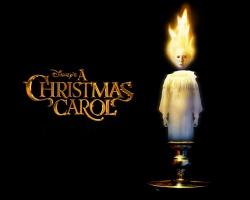For many people, Halloween just isn’t complete without a good ghost story; and Christmas isn’t complete without Charles Dickens’ A Christmas Carol, the book, the play or one of the movie versions. Author and Dickens scholar Cheryl Kincaid, who has completed a new book about Dickens and A Christmas Carol says the story actually works equally well for Halloween and Christmas. “This is probably the best-known and most popular ghost story in English literature,” she said. “However, it’s not the only supernatural tale Dickens wrote.”
Kincaid said Dickens had a nanny, as a young child called Mary Weller “Mercy.” She cared for him from age 5 to 11 and loved to tell him incredibly graphic tales of murder, ghosts, demons and cannibals. Kincaid siad Dickens considered “Mercy” to be his greatest influence, fueling his interest in spooky stories.
Kincaid said that during his teens, Dickens read The Terrific Register, a popular magazine of the era, which contained horrific stories, complete with ghoulish illustrations.
The first Charles Dickens writings to contain ghost stories was in The Pickwick Papers , with five tales of the supernatural within its pages: “The Lawyer and the Ghost,” “The Queer Chair,” “The Ghosts of the Mail,” “A Madman’s Manuscript” and “The Story of the Goblins Who Stole a Sexton.”
In 1836, Dickens released “The Story of the Goblins Who Stole a Sexton,” which Kincaid said is a forerunner of A Christmas Carol. “The two ghost stories contain several similar elements: a miserable loner, a Christmas setting and a ghost who shows the loner the error of his ways,” says Kincaid.
Another Dickens ghost story was “The Haunted Man and the Ghost’s Bargain” (1848), which was his last Christmas book. Kincaid says Dickens continued to write special Christmas tales, but subsequent ones were short stories, three in the horror genre.
Other Dickens stories to dig out for Halloween include the off-beat ghost story “To Be Read at Dusk,” “The Mortals in the House,” “The Ghost in Master B.’s Room,” “Mr. Testator’s Visitation,” “The Trial for Murder,” “The Signal Man” (about an actual train crash in 1861) and “Captain Murderer and the Devil’s Bargain,” a retelling of one of the stories his nanny told him in his youth.
Kincaid said, “It’s interesting that many people primarily think of Dickens as a Christmas storyteller, but he’s right up there with Edgar Allen Poe in my opinion for fantastic Halloween stories.”




